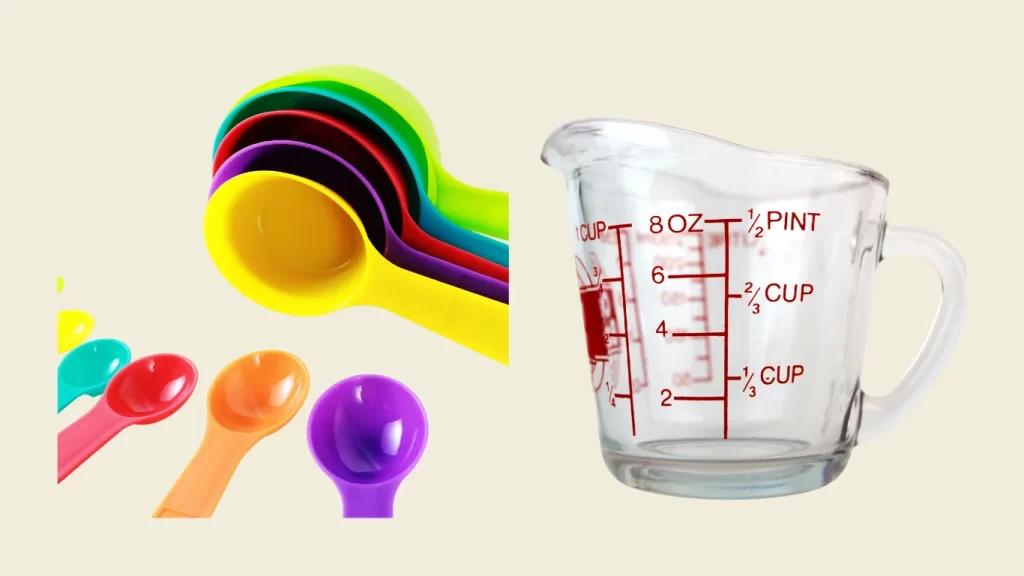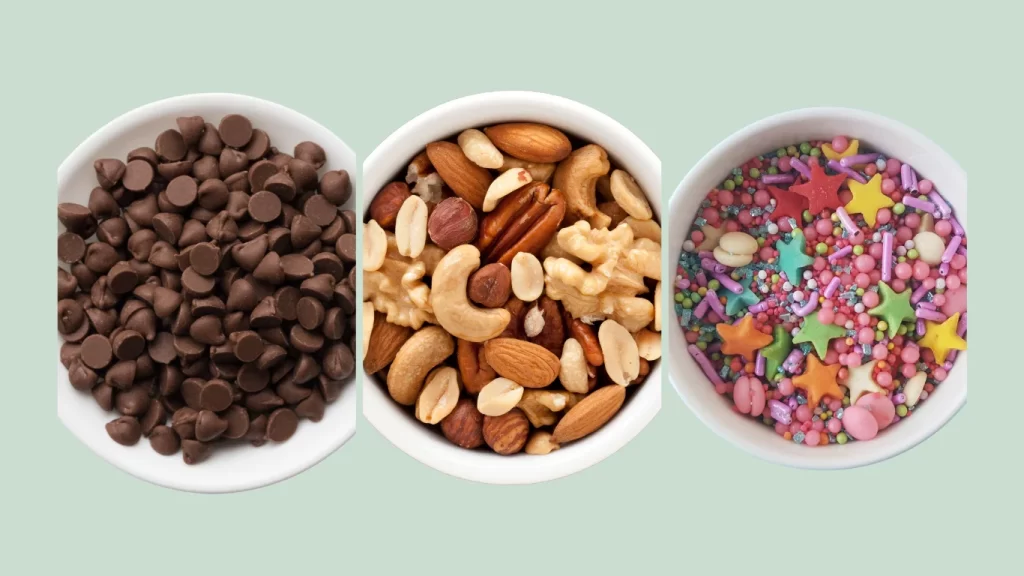Learning how to measure baking ingredients is quite literally the most crucial step in baking. In cooking, you can put a dash of this and a spoonful of that, and you will get phenomenal results. In baking, every tablespoon and cup needs to be measured to the T. Baking is a form of science, whereas cooking is more experimental. In this article, we will discuss measuring ingredients properly in order to get the best results in baking. Understanding the best measuring technique is crucial for beginner and expert bakers alike.
How do you measure dry ingredients?
Flour

First, let’s discuss how to measure flour because this is the most common and mis-measured ingredient in the baking world. Spoon and level your flour; never scoop from the bag or container. Spooning and levelling will leave you with the precise amount of flour, whereas scooping will give you more flour than you need, resulting in a dryer and denser finished product. Many tend to pack and tap their measuring cups. Which, similar to the scooping method, leaves you with more flour than you need.
Sugar or Brown Sugar
Unlike flour, sugar should be scooped directly from the container or bag and levelled off. Sugar is a more forgiving ingredient than flour. It merely adds more or less sweetness depending how much you add, although putting in the proper amount is important. Sugar crystals help in the breakdown process of various ingredients in recipes. They are also a big factor in the browning of many desserts and, of course, texture and density.
Cocoa powder, Confectioners sugar, and Oats
For most dry ingredients, the spoon and level method is the best way to get the most accurate measurement. Just like we discussed previously measuring flour with the spoon and level method, that is exactly how we want to measure cocoa powder, powdered sugar, and oats. These ingredients can drastically change the texture of our dessert if they are not appropriately measured, so putting in the right amount is crucial for the best final result.
Baking powder and Baking soda
Baking powder and baking soda should be scooped from the container using the relevant measuring spoon. To be more precise in measuring, level the mixture off with a knife or the leveller of the container.
Make the Fluffiest Cake , Learn our Expert Tips.
Dry and Wet Measuring Cups – Measure Baking Ingredients
Dry measuring cups such as the Oxo Stainless Steel one are used for measuring dry ingredients. They are designed to portion one measurement at a time, such as one cup, half a cup, a fourth cup etc. They are usually made of plastic or metal and do not have a spout.

Wet measuring cups are designed to measure wet ingredients and are usually made from clear glass or plastic. They have a handle and spout and various measurement points from the bottom to the top of the cup.
How do you measure wet ingredients?
Milk, Water, Oil Etc
Liquid ingredients should be measured with a wet measuring cup. For best results, bend down to the eye level of the cup to ensure an accurate measurement.
Semi liquids
Ingredients such as sour cream, butter, yogurt, applesauce, and peanut butter should be measured in dry measuring cups. Although they are semi-liquids, and it makes the most sense to measure them in wet measuring cups, they are rather thick to be accurately measured. Therefore, a dry measuring cup is your best bet. Spooning and levelling is the best method for semi-liquids, as they are too thick to pour or scoop out.
Add-Ins

Chocolate chips, coconut flakes, sesame seeds, sprinkles, nuts, etc. These add-ins should be measured in dry measuring cups; simply scoop out the contents and pour them into your mixture.
Closing Thoughts – Measure Baking Ingredients
Understanding how to measure baking ingredients is a crucial step for successful baking. As we discussed earlier, baking is a science. Just like science experiments require concentration and attention, baking requires patience and the utmost caution with measurement and accuracy.
Throughout this article, we discussed how to measure essential ingredients properly. We reviewed the difference between wet and dry measuring cups and whether to scoop or spoon ingredients. The different methods of measuring wet and dry ingredients make a significant difference in the product results. With these helpful tips, your next baking endeavour will be a success. Happy baking.
Do baking ingredients have to be measured accurately?
Baking is simply the combination of ingredients that, when combined, create a chemical reaction, which is essentially the final product. Therefore, in order for the chemical reaction to occur properly, the measurements must be accurate, and that is why it is highly important to measure ingredients for baking in the most accurate way possible.
How can I properly measure baking ingredients?
A digital scale is known to be the most accurate way to measure baking ingredients. Invest in a digital scale for your kitchen, which you can use for both baking and cooking.
Can I use two units of measurement in a recipe?
It’s best to convert everything to one unit of measurement. Using two units of measurement in one recipe may lead to inaccuracy and can affect the taste and consistency of the final product.
What is the number one rule in baking?
Read the recipe before starting to get a basic understanding of the steps and process.
What are the most common mistakes people make when baking?
– Checking the oven too frequently and interrupting the baking process.
– Ingredients were added at the wrong temperature.
– The oven not being preheated
– Not measuring ingredients correctly.
– Substituting ingredients
– Overmixing the batter.
– Putting the oven on the wrong setting.
– Not setting a timer.
What is causing my cake not to rise?
There are two ingredients that are in charge of making baked goods rise. One is baking soda and the other is baking powder. If you added too little of too much of one of these ingredients that may be the reason for your cake not rising.





